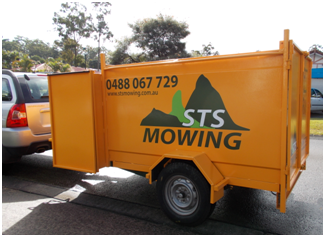As the warm weather sets in for the beginning of Spring, as well as lawn mowing, there are many jobs to get done in the garden and vegetable patch.
Prune shrubs that flowered in Winter/Sring as they finish. This includes pruning natives such as callistemons, grevilleas, and even wattles. This not only encourages an attractively shaped dense bush with more flowers next time (and low, where you can see them), but prevents the plant wasting energy on the production on fruit and seeds.
Poinsettiasmay still be showing some colour, so leave those until October if you prefer. Also cut back shrubs like acalypha, plumbago and hibiscus, before new growth starts with the onset of hot weather. Fertilise and mulch after pruning to set them up for the summer. Be sure to use a low-phosphorus formulation for sensitive natives such as grevilleas and banksias. If you have spring-flowering annuals in, keep up the water and give them a quick boost with a soluble fertiliser to keep them going as long as possible. Remove spent flowers to encourage the formation of new ones.
In the vegetable garden September is a peak planting month in South East Queensland, if you want to capitalise on the relatively mild conditions of Spring and early Summer to produce a wide variety of vegetable crops. Things will be more difficult when the punishing Summer weather really arrives. Solanaceous crops, such as tomatoes, eggplant, capsicums, tamarillo. Cucurbits, like, cucumbers, pumpkins, watermelons, rockmelons. The choko is an unusual member of this family, but can be planted at this time, too. Also, try carrots, lettuce, radishes, beetroot, silverbeet, beans, and cucurbits. If you still have space, you can also begin sowings of heat lovers like rosella, okra, snakebeans and sweetcorn.
With the weather warming up, cabbages will be very susceptible to caterpillar attack. If you still want to plant them, be prepared to take precautions. Pests and diseases in general will be proliferating. Keeping on the front foot both with respect to prevention and control measures, as well as attending to the health and vigour of the plants themselves so that they can resist and outgrow attacks, will help protect the investment of time and energy you’ve already made in establishing crops.
It’s tempting to get carried away when confronted with the variety of seeds and seedlings available in the garden centres, much less the many unusual varieties in the catalogues of specialist suppliers. Most vegetables need a constant supply of moisture to do well so do bear in mind your ability to keep the water up to plantings over the coming months.
Pest control is also a major problem during the warm months. Try to minimise population build-ups by being vigilant now newly hatched pests or isolated attacks may be difficult to spot, but if you control infestations early you can help reduce more serious damage later on. For example, protect young tomatoes and other susceptible fruit from fruit fly with appropriate bags or nets and set up fruit fly traps.
